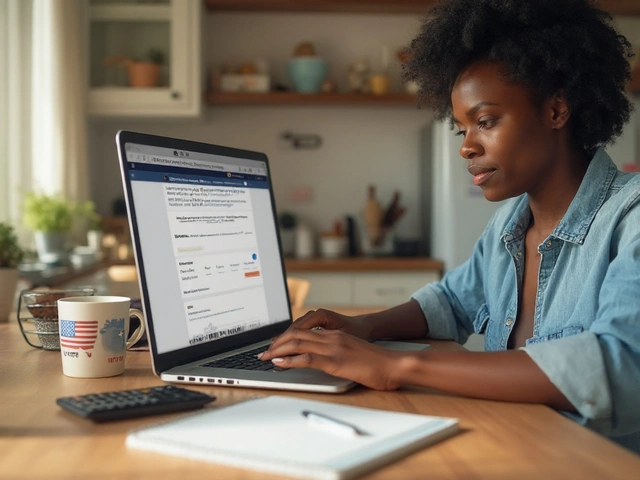Why Exercise Can Drop Your Blood Sugar Too Low
Working out with diabetes isn’t just about getting fit-it’s a balancing act. When you move, your muscles grab glucose from your blood without needing insulin. That’s great for lowering high blood sugar, but if you’re on insulin or certain diabetes meds, it can send your levels crashing. For many people with type 1 diabetes, fear of a low during a workout is the number one reason they skip exercise altogether. And it’s not just fear-hypoglycemia during or after physical activity is real, common, and sometimes dangerous.
Here’s the simple truth: exercise makes your body more sensitive to insulin for up to three days. That means even if you took your insulin hours ago, it’s still working hard when you’re lifting weights, running, or cycling. Add in the fact that your muscles are pulling glucose out of your bloodstream like a sponge, and you’ve got a perfect storm for a low.
When to Check Your Blood Sugar Before You Start
You wouldn’t drive a car without checking the fuel gauge. Don’t start a workout without checking your blood sugar. The American Diabetes Association says if your level is below 90 mg/dL, you need to eat carbs before you begin. Between 90 and 150 mg/dL? You still need a snack, but you might be okay to start moving. Anything above 150 mg/dL? You’re probably in the clear-unless you’re doing something intense or long.
Here’s what works in real life: check your glucose 15 to 30 minutes before you start. If it’s under 100 mg/dL, eat 15 to 20 grams of fast-acting carbs. That’s about half a banana, four glucose tablets, or 6 ounces of regular soda. Wait 15 minutes, check again. If it’s still low, eat another 15 grams. Don’t rush. A low blood sugar during a workout can make you dizzy, shaky, or even pass out. That’s not worth the risk.
Carbs Before, During, and After: The Right Amount
How many carbs you need isn’t one-size-fits-all. It depends on your weight, how hard you’re working, and how much insulin you have on board. A good rule of thumb: aim for 0.5 to 1 gram of carbs per kilogram of body weight during moderate exercise.
Let’s say you weigh 70 kg (about 154 pounds). That means you might need 35 to 70 grams of carbs during a 60-minute bike ride. That’s a lot-but you don’t have to eat it all at once. Spread it out. Eat 15 grams every 30 to 45 minutes. Keep glucose tabs or gels in your pocket, your bike bag, your gym locker. Don’t wait until you feel bad to reach for them.
And don’t forget after. Exercise can keep lowering your blood sugar for hours-even overnight. If you worked out in the afternoon, check your glucose before bed. If it’s under 120 mg/dL, eat a small snack with carbs and protein: a slice of peanut butter toast, a cup of yogurt, or a handful of nuts with an apple. This helps prevent nighttime lows, which are scary and common. One study found that 42% of people with type 1 diabetes have at least one severe low at night after daytime exercise.

Timing Matters: Avoid Peak Insulin Hours
When you take insulin affects how your body responds to exercise. If you take rapid-acting insulin before meals, that dose peaks about 60 to 90 minutes later. If you hit the gym right then, you’re asking for trouble. The same goes for long-acting insulin-it doesn’t peak, but it’s always working. That’s why consistency matters.
Try to exercise at the same time each day. If you always run at 5 p.m., your body learns to expect it. Your insulin needs become more predictable. If you’re on an insulin pump, you can lower your basal rate by 50 to 75% starting an hour before exercise. If you use injections, reduce your pre-workout bolus by 25 to 50%. These aren’t guesses-they’re evidence-backed adjustments recommended by the ADA.
And here’s a pro tip: always check your insulin-on-board (IOB) before you start. If you have 2 units of active insulin in your system, and you’re about to run, that’s like having 3 or 4 units working against you. Your pump or app can calculate this for you. Use it.
Not All Workouts Are Created Equal
Here’s something most people don’t know: not all exercise causes low blood sugar. In fact, some types can actually protect you from it.
Aerobic workouts-like jogging, swimming, or cycling-tend to lower glucose steadily. But resistance training? Weight lifting? That’s different. A 2018 study showed that doing 45 minutes of strength training before a 45-minute cardio session cut the drop in blood sugar almost in half. Why? Because lifting weights triggers your liver to release glucose. It’s like your body hits the brakes on the drop.
Even better: short bursts of high-intensity effort. Just 10 seconds of all-out sprinting-on a bike, treadmill, or even stairs-before your workout can stabilize your glucose for the next hour. People who added this to their routine reported fewer lows, sometimes cutting them from four times a week to once every two weeks.
High-intensity interval training (HIIT) also helps. A few 15-second sprints during your workout keep your blood sugar from falling too far. Circuit training, though, can be risky if you’re going nonstop with little rest. It’s easy to burn through glucose fast. Know your limits.
Technology Is Changing the Game
Five years ago, managing exercise with diabetes meant guessing. Today, it’s data-driven. Continuous glucose monitors (CGMs) like the Dexcom G7 now have an “exercise mode.” When it detects movement, it lowers alert thresholds by 20 mg/dL so you don’t get false alarms. It’s smarter, more accurate, and built for active people.
Insulin pumps are catching up too. The Tandem t:slim X2 pump, approved in March 2023, has an “Exercise Impact” feature. It uses machine learning to predict how your glucose will drop based on your past workouts, your insulin on board, and your current activity. Then it automatically reduces your insulin delivery to keep you safe.
And it’s not just hardware. New research is testing artificial pancreas systems that deliver glucagon during exercise. Glucagon is the hormone that tells your liver to release sugar. In a recent NIH trial, a dual-hormone system reduced exercise-related lows by over 50%. This isn’t science fiction-it’s coming soon.

What to Do When You Still Go Low
Even with all the planning, lows still happen. You’re human. Your body changes. One day you do the same run at the same time with the same insulin dose-and you’re fine. The next day, you’re at 60 mg/dL halfway through.
That’s normal. Don’t panic. Here’s your action plan:
- Stop exercising immediately.
- Check your glucose. If it’s under 70 mg/dL, eat 15 grams of fast-acting carbs.
- Wait 15 minutes. Check again.
- If it’s still low, eat another 15 grams. Repeat until you’re above 100 mg/dL.
- Don’t restart until you’re stable. Pushing through a low can lead to a crash-or worse.
Keep fast-acting carbs with you at all times. Don’t rely on vending machines or gym snack bars. Carry your own. Glucose tabs are compact, reliable, and don’t melt in your pocket.
Real People, Real Results
On diabetes forums, people share what works. One user on Reddit said he did the same 5K run three days in a row-and his glucose was 70, 180, and 120. Same time. Same distance. Same insulin. Why? Stress. Sleep. Weather. Hormones. Your body doesn’t follow a spreadsheet.
But here’s what worked for others:
- 78% of users on T1D Exchange use temporary basal rate reductions before exercise-and 63% say it helps.
- One woman added a 10-second bike sprint before every workout. Her lows dropped from four a week to one every two weeks.
- A man with type 1 diabetes started lifting weights before his runs. His average glucose during cardio went from 105 to 124 mg/dL. No more mid-run crashes.
There’s no magic fix. But there are tools. There are patterns. And there’s hope.
Your Next Steps
Start small. Pick one workout you already do. Track your glucose before, during, and after for a week. Note your insulin dose, carbs eaten, and how you felt. Look for patterns. Did you go low after morning runs but not evening walks? Did lifting before cardio help?
Then make one change. Lower your basal rate. Eat a snack before your workout. Add a 10-second sprint. See what happens.
It takes 3 to 6 months to get good at this. You’ll have bad days. You’ll have lows. You’ll have highs. But you’ll also start to feel stronger, more confident, and more in control. Exercise isn’t the enemy. It’s part of your treatment. And with the right plan, you can do it safely-for life.






